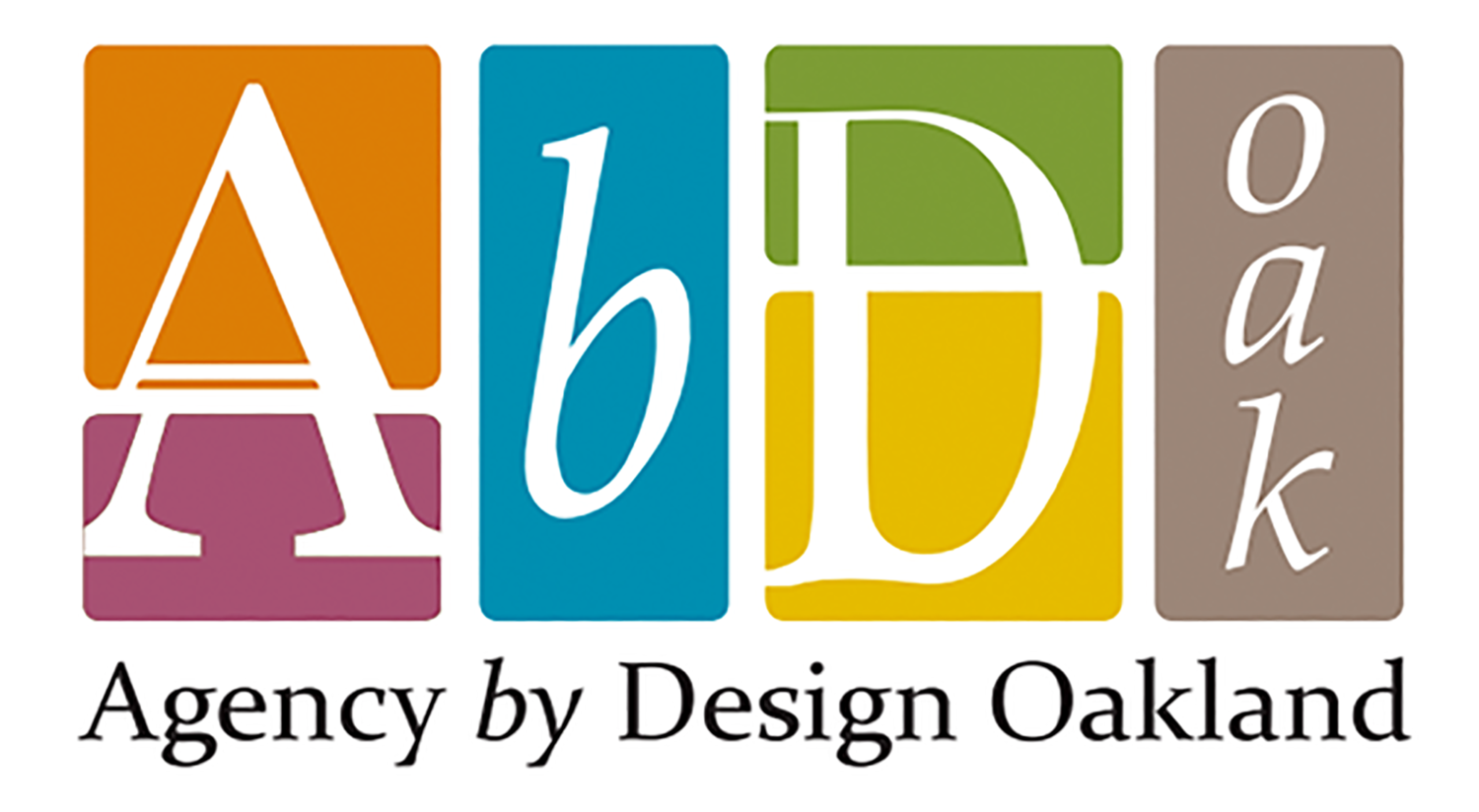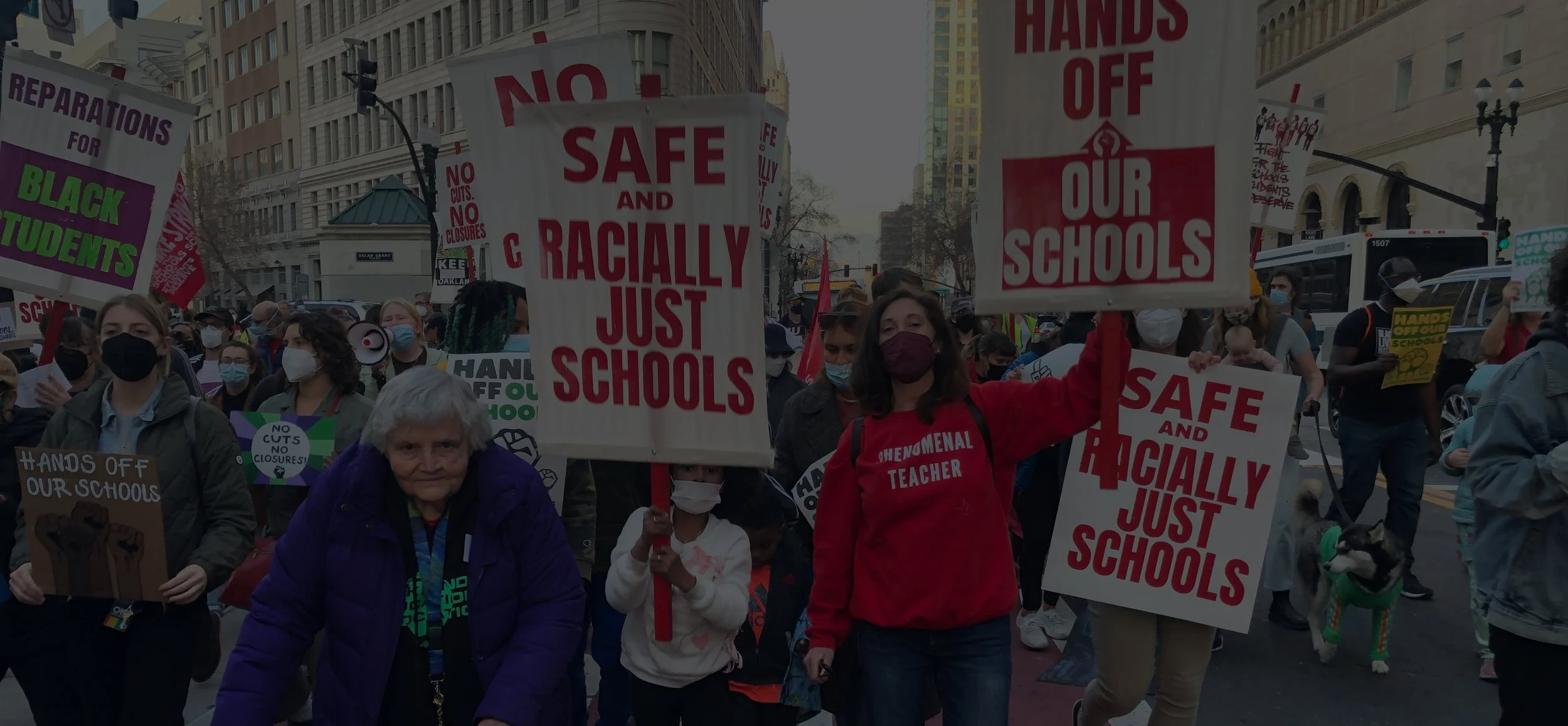By Brooke Toczylowski & Paula Mitchell
A year and a half ago, when we established Agency by Design Oakland, we situated ourselves inside the system. This is why both our executive director, Brooke Toczylowski, and our fellowship director, Paula Mitchell—who are “Teachers on Special Assignment” and therefore a part of the union within the Oakland Unified School District—went on strike at the end of February. We went on strike to improve the Oakland educational system by advocating for more in-school supports for students and a respectable wage for teachers. It is a pivotal time for public education in California and the nation. This is a unique moment where we have the opportunity to activate our communities and act on our collective agency to help change inequitable systems.
At Agency by Design Oakland we believe best practices and new ideas thrive on cross-pollination, so we work with district-run schools, innovative charters, and the occasional independent school. But we are especially focused on the teachers and students at district-run schools who have had less access and less flexibility to implement forward-thinking research models. We are committed to investing our resources in developing high-quality, reflective teachers who offer their learners opportunities to understand and remake the world around them. And the strike has provided yet another backdrop to highlight the importance of our work and why our framework—which focuses on developing a sensitivity to the design of objects and systems—is essential for times like these.
It is a pivotal time for public education in California and the nation. This is a unique moment where we have the opportunity to activate our communities and act on our collective agency to help change inequitable systems.
Fellowship Director, Paula Mitchell and Executive Director, Brooke Toczylowski, picketing at Grass Valley Elementary School during the Oakland Education Association’s 7-day strike, from February 21 to March 1, 2019.
Knowing the history of an institution and the forces at play is necessary when examining ways to make systemic change. The Oakland Unified School District has had system-wide issues around the equitable distribution of resources for decades. Years of underfunding due to the 1978 passage of Proposition 13 helped contribute to an untenable financial situation that ended in state receivership and a $100 million loan from Sacramento whose shadow still hangs over OUSD. Recent mismanagement at the district level—including gross overspending—put the city’s schools in even greater peril. Soaring housing costs and stagnant wages, meanwhile, have contributed to a teacher retention that is concentrated at the schools with the greatest needs and the most vulnerable learners. When teachers don’t receive the support they need and subsequently leave, these schools and students must figure out a way to deal with almost constant instability.
Paula has been here before; during her second year of full-time teaching in 1996 the union went on strike for 6 weeks. Listen more to her journey and experience with that strike and the current situation on her recent podcast interview with the GR project.
Despite this, we are seeing evidence of agency and empowerment all around us. From the successful United Teachers of Los Angeles strike in January to the powerful, sustained efforts of the Roots International Academy community in advocating for their school to remain open, people are becoming activated in ways that are raising the level of action and demands for our futures. Examining systems in order to find ways to leverage teacher and student empowerment and agency is critical to the mission of Agency by Design Oakland. The strike offered a real-life example of how teachers and students can learn more about the system they’re engaged in every day and figure out how to affect positive change.
A key aspect of the Agency by Design framework, and one that sets it apart from other maker-centered or project-based pedagogies, is its focus on systems. In the run-up to the strike, during a January daylong workshop with our fellows at Frick Middle School, we asked teachers to use the Parts Perspectives Me and Parts People Interactions thinking routines to look closely at a variety of systems, including those connected to the strike. After digging in and identifying the many parts and perspectives connected to their chosen system, participants then found opportunity through an Imagine If… prompt. Instead of building a model, we asked participants to use theater tableaus or skits to demonstrate their understanding of the systems and how they would redesign them, which they presented back to the group.
Teacher fellows using Agency by Design tools and theater to engage in systems thinking around issues involving the strike.
One group, for example, looked at maps describing the distribution of charter schools and campaign contributions across the city—and ended up talking in depth about resources shared (and not) between charter and district schools. Ultimately, our goal is for educators to bring a systems focus back to their classroom so learners can better understand and remake the world around them. As one teacher reflected, "The best part was the opportunities to participate as student learners as we practiced systems thinking routines because it provided me the chance to think about how these structures could be translated to my computer science classroom."
Now more than ever, understanding systems—how they are designed, how they function, and how they interact with one another—is the key to creating change.
Throughout the strike we saw teachers and students engaging in the system in new ways. But one display of student agency was particularly moving. On March 4, the first day back to school after the seven-day strike, the school board met to vote on proposed cuts that would eliminate programs supporting Asian and Pacific Islanders, Foster Youth, Restorative Justice and libraries—and hundreds of high school students organized their own walkout and marched to the school board meeting to protest these cuts.
Student board member Yota Omosowho speaking passionately to the crowd of students about taking on the system and fighting the cuts to student services the board passed moments before. Board member Roseann Torres speaks in support after.
The line of students waiting to speak stretched around the auditorium as student after student spoke about the impact these programs had on their lives. Some pleaded with the board and left the podium in tears, needing to be supported by their friends. Others spoke with fire and passion, refusing to give up the floor even when their mic was cut, turning directly to the crowd to be heard. All the students showed a depth of knowledge about the programs on the chopping block and both plainly and eloquently spoke in support of initiatives that have impacted them so positively.
In the end, the cuts passed. But the student engagement in this moment is evidence of a growing awareness around the systems at play and how one might find opportunity to remake them. The students at this board meeting, who perhaps before the strike knew little about the state of the district’s funding, learned from the strike how to show up and use their voices to demand a change. We did that. We teachers, through our actions, modeled for the students how to do that—and they took the baton and ran with it. Now more than ever, understanding systems—how they are designed, how they function, and how they interact with one another—is the key to creating change.
Learn more about K-12 systems thinking tools and activities here, or check out the book Maker-Centered Learning: Empowering Young People to Shape Their Worlds, which showcases Oakland teachers’ case studies.




























